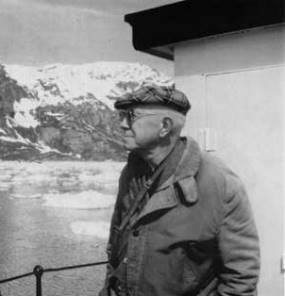Building on their work
The work of these early scientists has been built on and expanded by succeeding generations of researchers, resulting in hundreds of scientific publications to date. This has included work on glaciology, geology, plant succession, stream succession, community ecology, marine ecology, fjord oceanography, and many species-level studies of marine and terrestrial mammals, birds, fishes, invertebrates, plants, and fungi. For example, the rapid recession of many of the glaciers has provided an unparalleled opportunity to study ecosystem development. Nearly continuous documentation of terrestrial revegetation has been recorded since 1916 during research studies conducted by Dr. Cooper and Dr. D.B. Lawrence and their students. This study of one of the most valuable primary succession sites in the world continues today, and has profoundly influenced the development of plant succession theory. While opportunities to study secondary succession of ecosystems are numerous, few opportunities exist elsewhere to study primary succession from "initiation" to "equilibrium". The long-term study in Glacier Bay has been called the best data set of its kind in the world.
Coming together
In 1983 a Glacier Bay Science Symposium was sponsored by the NPS and the organization Friends of Glacier Bay to celebrate nearly a century of research in the Glacier Bay region. The success of the gathering prompted the research community to organize another symposium in 1988, and the pentennial sequence was repeated in 1993 with the Third Glacier Bay Science Symposium. As the century turned, interest and participation in science at Glacier Bay had outgrown the park's small conference facility, and the Fourth Glacier Bay Science Symposium was held at Centennial Hall in Juneau in 2003. This last conference brought together over 150 registered participants from a broad spectrum of disciplines and lifeways to share scientific and cultural perspectives derived from research at Glacier Bay.
Research and Management
The role of science in Glacier Bay today extends beyond use of the Park as a natural laboratory. Several national reports have emphasized the need to strengthen science in National Parks and to make information-based management decisions. In 1990 the NPS asked the National Academy of Sciences (NAS) to assemble a panel of experts to make recommendations on how to improve science in National Parks. This panel’s report (Risser et al. 1992) motivated the Secretary of the Interior to create the National Biological Service (now the Biological Resources Division of the U.S. Geological Survey) to provide high-quality independent science to the NPS and other DOI land management agencies. The panel’s report recommended that a synergistic relationship between national parks and the scientific community be aggressively developed. As a result, the necessity for science-based management of resources is incorporated into Glacier Bay National Park's Mission Statement. The USGS and other science agencies along with universities work cooperatively with the NPS in the design and implementation of research and monitoring projects to insure that the best scientific information is available to park managers.



